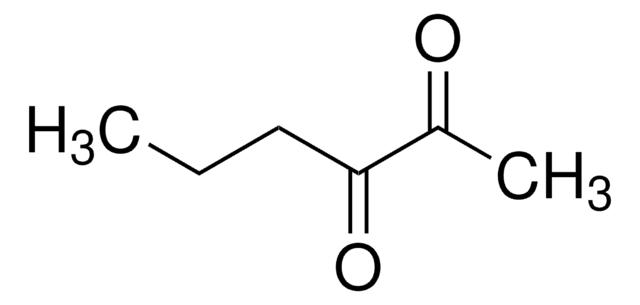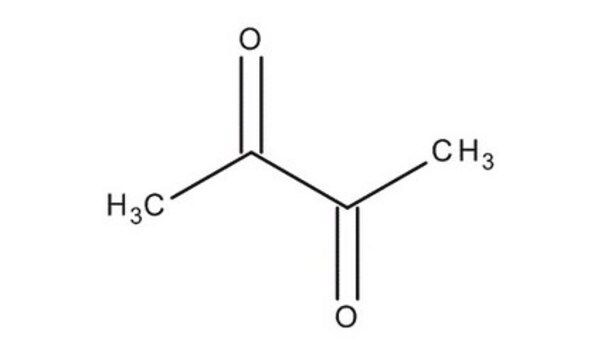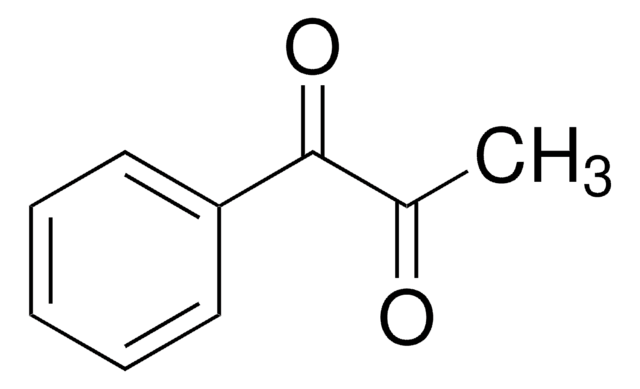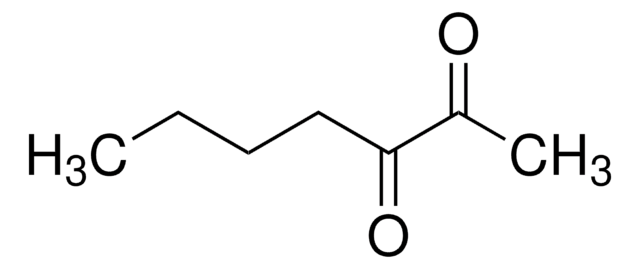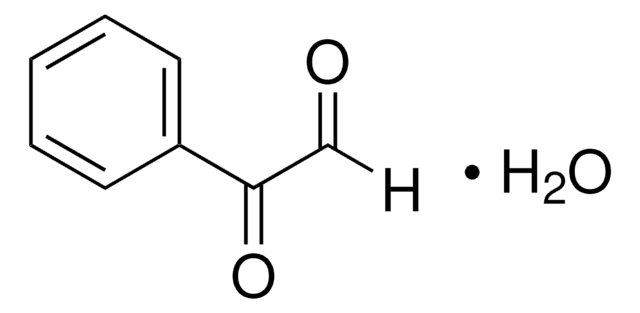W200832
Acetoin
natural, ≥95%, FG
Sinónimos:
3-Hydroxy-2-butanone, Acetylmethylcarbinol
About This Item
grade
FG
Fragrance grade
Halal
Kosher
natural
Quality Level
agency
follows IFRA guidelines
reg. compliance
EU Regulation 1223/2009
EU Regulation 1334/2008 & 178/2002
FDA 21 CFR 117
FDA 21 CFR 172.515
assay
≥95%
greener alternative product characteristics
Less Hazardous Chemical Syntheses
Use of Renewable Feedstocks
Learn more about the Principles of Green Chemistry.
sustainability
Greener Alternative Product
refractive index
n20/D 1.417 (lit.)
bp
148 °C (lit.)
mp
15 °C (monomer)
90 °C (dimer) (lit.)
density
1.013 g/mL at 25 °C (lit.)
application(s)
flavors and fragrances
documentation
see Safety & Documentation for available documents
food allergen
no known allergens
fragrance allergen
no known allergens
greener alternative category
organoleptic
butter; creamy
storage temp.
2-8°C
SMILES string
CC(O)C(C)=O
InChI
1S/C4H8O2/c1-3(5)4(2)6/h3,5H,1-2H3
InChI key
ROWKJAVDOGWPAT-UHFFFAOYSA-N
¿Está buscando productos similares? Visita Guía de comparación de productos
Categorías relacionadas
General description
Application
- Role of Volatile Organic Compounds Produced by Kosakonia cowanii Cp1 during Competitive Colonization Interaction against Pectobacterium aroidearum SM2.: This study investigates the role of volatile organic compounds, including acetoin, produced by Kosakonia cowanii Cp1 in inhibiting Pectobacterium aroidearum SM2, highlighting the potential of acetoin in biocontrol applications (Mena Navarro et al., 2024).
- Chemical imitation of yeast fermentation by the drosophilid-pollinated deceptive trap-flower Aristolochia baetica (Aristolochiaceae).: The research explores how Aristolochia baetica mimics yeast fermentation, including the production of acetoin, to attract drosophilid pollinators, emphasizing acetoin′s role in plant-pollinator interactions (Rupp et al., 2024).
- Investigating the impact of various sorghum types on the key aroma compounds of Sichuan Xiaoqu Baijiu through application of the sensomics approach.: This study examines how different sorghum types influence the key aroma compounds, including acetoin, in Sichuan Xiaoqu Baijiu, demonstrating acetoin′s significance in food and beverage flavor profiles (Ma et al., 2024).
- Regulation of Tetramethylpyrazine Formation by the Phenolics-Fenton Coupled Redox Cycling System.: The research delves into the biochemical pathways regulated by acetoin in the formation of tetramethylpyrazine, providing insights into its role in flavor compound biosynthesis (Xu et al., 2024).
- Design of a synthetic enzyme cascade for the in vitro fixation of formaldehyde to acetoin.: This paper presents the development of a synthetic enzyme cascade to convert formaldehyde to acetoin, showcasing its potential in biotechnological applications for formaldehyde detoxification (Cui et al., 2024).
Legal Information
signalword
Danger
hcodes
Hazard Classifications
Eye Dam. 1 - Flam. Liq. 3
Storage Class
3 - Flammable liquids
wgk_germany
WGK 1
flash_point_f
118.4 °F - closed cup
flash_point_c
48 °C - closed cup
ppe
Eyeshields, Gloves, type P3 (EN 143) respirator cartridges
Certificados de análisis (COA)
Busque Certificados de análisis (COA) introduciendo el número de lote del producto. Los números de lote se encuentran en la etiqueta del producto después de las palabras «Lot» o «Batch»
¿Ya tiene este producto?
Encuentre la documentación para los productos que ha comprado recientemente en la Biblioteca de documentos.
Los clientes también vieron
Nuestro equipo de científicos tiene experiencia en todas las áreas de investigación: Ciencias de la vida, Ciencia de los materiales, Síntesis química, Cromatografía, Analítica y muchas otras.
Póngase en contacto con el Servicio técnico

